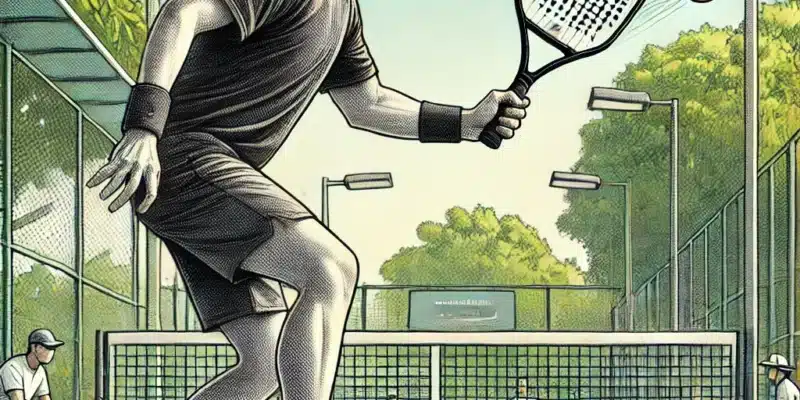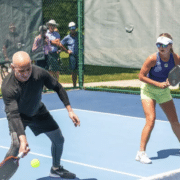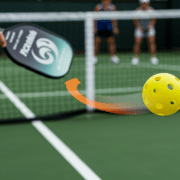What is a dink? Dink technique in pickleball

One of the key elements of success in pickleball is the skill of executing a dink, a special shot that is both a defensive and an offensive tool. In this article, we will take a closer look at what a dunk is and how to perfect its technique to achieve victory on the court.
We also suggest that you familiarize yourself with the general rules of pickleball in this article to understand the basic principles of the game.
Page contents
What is a dink?
A dink is a controlled ball strike aimed at the opponent’s “kitchen” zone (a zone where volleying is prohibited). The purpose of the dink is to launch the ball low and unpredictably so that the opponent cannot perform a volley, but would have to wait for the bounce or lift the ball up, losing the initiative.
The dink can be either an offensive (creating pressure on the opponent) or a defensive (neutralizing the opponent’s attacks) stroke. Usually, during the execution of the dink, all four players (in doubles) are near the “kitchen” line.
How to start playing pickleball and master the dink?
Before mastering the dink technique, it is important to understand the basics of a successful pickleball game and the basic principles of the game.
Key aspects of the dink technique
- Preparing your body and racket:
Take a sports stance with your knees bent and feet shoulder-width apart. Hold the racket in front of you with a loose grip. Make short, compact movements during the swing. - Eye control:
follow the ball throughout its flight to your racket. This will help you to accurately estimate the trajectory and execute an accurate shot. - Footwork:
Keep your body parallel to the kitchen line. If you need to reach the ball, take a side step instead of a step over your feet. Stepping over your feet will break your stance and prepare you for the next shot. - Maintain your position near the line:
Stay near the kitchen line to keep pressure on your opponents. Try not to let the ball fall under your feet. - Gently lifting the ball:
while hitting, gently lift the ball up and forward, the movement should come from the shoulder, not the wrist or elbow. - Respect for the net:
The height of the top of the ball’s trajectory is important. Leave a certain amount of height above the net, but avoid hitting too low, which can hit the net. - Finishing the stroke:
continue to move the racket after the stroke, staying in a low and collected position. This will help make your stroke more stable. After the shot, quickly return to the starting stance.
A dink is not just a shot, it is an element of strategy. With the help of a dink, you can control the game by forcing your opponent to make mistakes, exhausting him, and creating opportunities for attacking shots. The ability to perform dinks at a high level is the key to success in pickleball.












